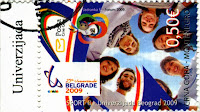Located at the deepest end of Boka Kotorska (Bay of Kotor), in a triangle bordered by Adriatic Sea, the river Skurda and St. John hill, Kotor has a long history, extended until the Illyrian times. The romans named it Acruvium, and ruled it until the fall of the Western Roman Empire, when it became part of the Byzantine Empire for several hundred years, with brief interruptions, under the name Dekaderon. Between 1185 and 1371 it was one of the coastal towns which were part of the Medieval Serbian state, under the management of dynasty Nemanjic, who gave it the name Kotor. Then it was an independent republic for almost 30 years (1391-1420), but, because of the danger represented by Ottoman Empire, in 1420 the people from Kotor voluntarily gave the management of the town to the Venetian Republic. Renamed Cattaro, it was part of the Venetian Albania province until 1797, except for brief periods of Ottoman rule (1538-1571, 1657-1699). After the Treaty of Campo Formio, it passed to the Habsburg Monarchy until 1918, when became a part of Yugoslavia and officially became known again as Kotor.
In the Middle Ages, this natural harbour was an important artistic and commercial centre with its own famous schools of masonry and iconography, exerting considerable influence on developments in architecture and human settlement. Kotor and its neighbours were main bridgeheads of Venice on the southern Adriatic coast. Therefore in 1979 it was designated an UNESCO World Heritage Site, under the name Natural and Culturo-Historical Region of Kotor. The limits of the site coincide approximately with the crests of the natural sinkhole formation, at both ends, it being bordered by the national parks of Orten and Lovcen. Most of Kotor's palaces and houses, many Romanesque churches, all of Dobrota's palaces, and Perast's main buildings have all suffered from earthquakes, the city being even evacuated after the most recent, on 15 April 1979. An intensive restoration and reconstruction programme has now been completed and the city is flourishing again.
Kotor’s Stari Grad (old town) is a labyrinth of cobbled streets, housing a plethora of ancient churches and former aristocratic mansions. No matter from which of the three gates visitors enter through, the famous pinnacle and "protector of the city", the Cathedral Sveti Tripin (Cathedral of Saint Tryphon) cannot be missed. Kotor's Clock Tower (in the postcard), opposite the Sea Gate, in the Arms Square, dates from 1602. It is a three-story building with two clock faces. On its facade is the crest from the ruling prince of the time. In front of the clock tower is a "pillar of shame" where local criminals were once tied as punishment.
About the stamps
The first stamp is part of the annual series Nature Protection. Issued on June 10, 2009, it contain two stamps:
• Plav Lake (0.20 EUR)
• Black Lake (0.50 EUR) - it's on this postcard
The second stamp, issued also in 2009, was dedicated to the 2009 Summer Universiade, celebrated in Belgrade, Serbia from 1 July to 12 July 2009.
References
Natural and Culturo-Historical Region of Kotor - UNESCO official website
Kotor - Visit Montenegro
Destination Montenegro: The Historical City of Kotor - Living Montenegro
Sender: Mircea Ostoia
Sent from Kotor (Kotor / Montenegro), on 16.10.2013
Photo: Branislav Strugar



No comments:
Post a Comment